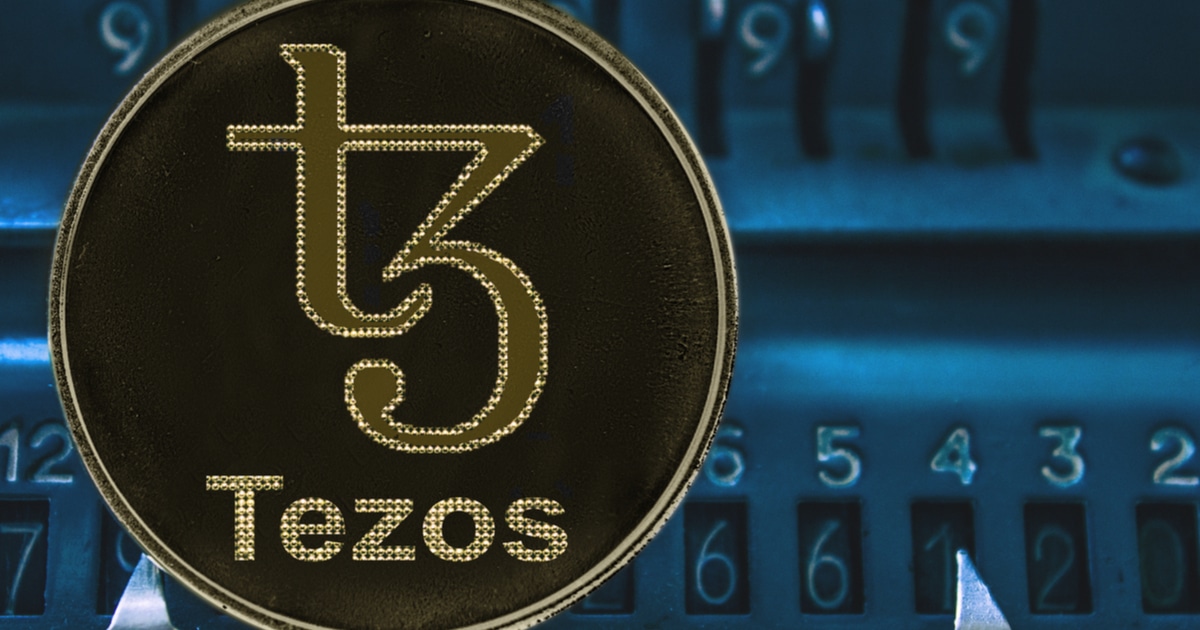After reading this recently posted thread... There some points to be made about the space.
The topic is a bit muddled, but let's look at how a large portion of global dollars move around today... and why Bitcoin is almost an antithesis to the way money currently functions.
TLDR; we're going to detail how global bank balance sheets enable wholesale global banking (how the money moves around). Largely using a 2017 report from the BIS... and then an opinion as to why Bitcoin would not be desirable (by banks) to replace this function.
----going long.
Ok, per the post:
Big banks move so much money buying and selling bonds, equities, Forex, repo markets etc. that just the SHEER AMOUNT involved in each these transactions automatically triggers slow legacy financial reporting procedures.
How much money is moved around daily? Trillions. And how is it accomplished? Repo is one, another major method is currency swaps/synthetic repo. No one really tracks these; and they are only reported in the notes of bank's balance sheets. Example of recording repo/derivatives - JP Morgan Chase financials PDF - pages 167, 186, 189, 192, 199, 289 - Note 29, etc.
You'll see wording re: "off balance sheet" items, and "re-pledgable collateral" (this is the collateral multiplier as viewed via one participant's balance sheet).
Some swap transactions aren't recorded because their values are effectively nil... however the notes for a Canadian bank would still have to explain how a bank in Canada can have CAD denominated liabilities offsetting USD assets... and may indicate that a swap has taken place.
The BIS aggregated a bunch of bank's balance sheets to try and capture how much swap debt exists... Essentially, how large this global funding market is (shadow banking market). This was not a full activity, and was limited to the banks surveyed.
Every day, trillions of dollars are borrowed and lent in various currencies. Many deals take place in the cash market, through loans and securities. But foreign exchange (FX) derivatives, mainly FX swaps, currency swaps and the closely related forwards, also create debt-like obligations. For the US dollar alone, contracts worth tens of trillions of dollars stand open and trillions change hands daily. And yet one cannot find these amounts on balance sheets. This debt is, in effect, missing.
Except that it's not missing. These credit created dollars are circulating around the world. They are the cause of M2 skyrocketing from the 1970s through to 2007 despite low Fed reserve levels. These dollars are "created" as banks expand their balance sheets... sometimes enabled by selectively transacting off-balance sheet. The same tools can be used to continue to access funding while limiting new commercial loan origination (banks can swap amongst themselves, vs. lending to the broader public to achieve returns).
As an example, we can look at Japan. The endless QE regime was supposed to provoke Japanese banks to lend and spur inflation. That inflation never arrived for over 20 years. A Japanese bank could engage in an fx swap, swap Yen for USD and roll that into treasuries. Now the Japanese bank could reap UST yields... avoiding the negative rates they're subject to domestically. All while playing it safe, and not lending to the broader public (ignoring the intention of the Bank of Japan).
Anyway.. going off on too much of a tangent. Suffice to say... repo, swaps, other derivatives also function as balance sheet tools. Re-jigging assets and liabilities to allow for further business activity in spite of reserve requirements, or domestic limitations.
As a result, we know little about it. How much is owed, by whom and for what purpose: trade hedging, asset-liability management, market-making? What does it imply for measures of international credit like the BIS global liquidity indicators (GLIs)? Answers to these questions can inform assessments of global financing conditions and financial stability. For instance, serious strains seized the FX swap market during the Great Financial Crisis (GFC).
There you have it. The BIS (the central bank's central bank) admitting that they can't measure money. Confidence inspiring, ain't it?
This is also why 2007/2008 was such a blindside. These markets have been ignored (and largely continue to be).
The debt remains obscured from view. Accounting conventions leave it mostly off-balance sheet, as a derivative, even though it is in effect a secured loan with principal to be repaid in full at maturity. Only footnotes to the accounts report it.
As stated earlier (and can check the previously linked example bank balance sheet as a reference).
Focusing on the dominant dollar segment, we estimate that non-bank borrowers outside the United States have very large off-balance sheet dollar obligations in FX forwards and currency swaps. They are of a size similar to, and probably exceeding, the $10.7 trillion of on-balance sheet debt. On the other side of the ledger, as much as two thirds of the dollar-denominated bonds issued by non-US residents could be hedged through similar off-balance sheet instruments. That fraction seems to have fallen as emerging market borrowers have gained prominence since the GFC.
$10T is on balance sheet. The BIS continues to report on this dollar market.. with recent size estimates of over $80T. (It's likely over $100T+ today)
Note the key words here "other side of the ledger", USD denominated debt not issued in the US, also being pledged as collateral for similar activities... and not included in the $10T estimate in 2017.
The implications for financial stability are hard to assess. This requires a more granular analysis of currency and maturity mismatches than the available data allow. Much of the missing dollar debt is likely to be hedging FX exposures, which, in principle, supports financial stability. Even so, rolling short-term hedges of long-term assets can generate or amplify funding and liquidity problems during times of stress.
Three closely related instruments allow off-balance sheet foreign currency borrowing and lending: FX swaps, currency swaps and (outright) forwards. In an FX swap, two parties exchange two currencies spot and commit to reverse the exchange at some pre-agreed future date and price. Currency swaps are like FX swaps, except that the two parties agree to exchange both principal and interest payment streams over a longer term. FX swaps mature within a year (providing “money market” funding); currency swaps have a longer maturity (“capital market” funding). A forward is a contract to exchange two currencies at a pre-agreed future date and price. After a swap’s spot leg is done, what is left is the agreed future exchange – the forward leg.
These transactions are functionally equivalent to borrowing and lending in the cash market. Yet the corresponding debt is not shown on the balance sheet and thus remains obscured.
In simpler terms; this activity moves (and creates) dollars on balance sheets... dollars that are used in the real world, but the obligation tied to these dollars is unreported.
Why such a difference in accounting treatment? One reason is that forwards and swaps are treated as derivatives, so that only the net value is recorded at fair value, while repurchase transactions are not. Since the value of the forward claim exchanged at inception is the same, the fair value of the contract is zero and it changes only with variations in exchange rates. Yet, unlike with most derivatives, the full notional amount, not just a net amount as in a contract for difference, is exchanged at maturity. That is, the notional amounts are not purely used as reference for the income streams to be exchanged, such as in interest rate derivatives. Another reason is the definition of control, which for cash requires control over the cash itself (eg a demand deposit) but for a security just the right to the corresponding cash flows. This determines what is recognised and not recognised on the balance sheet.
This is important to note. The "money" here isn't cash, isn't a demand deposit. It's just ledger entries... which comprise all money (physical cash/deposits are just a partial form and all ledger dollars are hypothetically convertible to them).
The framing of "control" applies to the underlying collateral, which need not change hands to have a valid claim over.
This makes it very difficult to measure the debt and funding involved. The balance sheets show only the final outcome of a series of swap and forward transactions. As the box outlines, this shows as an apparent currency mismatch. For instance, if a bank swaps its home currency for dollars, its dollar assets end up exceeding its dollar liabilities. Moreover, for highly active dealer banks, the balance sheet shows only the net result of a possibly huge number of deals for dealer banks very active in the market.
More stress on the fact that these tools for moving money are really for manipulating balance sheets. Dealers are less constrained by off balance sheet activity.
The dollar reigns supreme in FX swaps and forwards. Its share is no less than 90% (Graph 2), and 96% among dealers (Table 1). Both exceed its share in denominating global trade (about half) or in holdings of official FX reserves (two thirds). In fact, the dollar is the main currency in swaps/forwards against every currency. For instance, it predominates in forwards in the Norwegian krone, the Swedish krona and the Polish zloty, currencies that trade in the spot market more against the euro.6/
This is key. The dollar is a global unit. It denominates the bulk of global trade. The amount of those dollars is well beyond the ability of the Fed to measure.. and are disconnected from Fed reserve levels.
FX swaps were a key part of non-US banks’ total US dollar funding, amounting to an estimated $0.6 trillion, roughly 6% of the total in March 2017 (Graph 4). The rest, about $9.4 trillion, mostly took the form of deposits from US and non-US nonbanks (red and blue areas), and dollar debt securities (yellow area)
Who, then, lends dollars to non-US banks via the FX swap market? Four candidates are: US banks, central banks, European agencies and supranational organisations, and private non-banks. All of these appear to provide some funding, with US banks and central banks together closing about half the gap
Note the language here, and the attempt to tie dollar funding to the US and central banks. It's a guess ("candidates", and "appear"s), and even generously.. dollar funding originating from the US only approaches half of the total. In reality... it's far less.
Dollar funding is provided by the broader wholesale global market. It is the activity of all banks, bank-like institutions, dealers, across the world. It is often called shadow banking, or the eurodollar market.
.....
Anyway, getting to why Bitcoin would not be adopted by banks for global funding activities:
It isn't necessarily a matter of regulation, or the encumbrance of legacy reporting systems. It's that Bitcoin doesn't allow for the flexibility (chicanery) of the current ledger system.
The current monetary system has evolved in such a way as to be dependent upon bypasses to ensure continued ability to supply dollars globally.
The commercial banking system relies on accounting "tricks", and their perceptions of risk to manage money.... and one doesn't even need to point to 2007/8 to prove they've been irresponsible in both areas.
A hard ledger precludes this.
[link] [comments]

You can get bonuses upto $100 FREE BONUS when you:
💰 Install these recommended apps:
💲 SocialGood - 100% Crypto Back on Everyday Shopping
💲 xPortal - The DeFi For The Next Billion
💲 CryptoTab Browser - Lightweight, fast, and ready to mine!
💰 Register on these recommended exchanges:
🟡 Binance🟡 Bitfinex🟡 Bitmart🟡 Bittrex🟡 Bitget
🟡 CoinEx🟡 Crypto.com🟡 Gate.io🟡 Huobi🟡 Kucoin.




















Comments